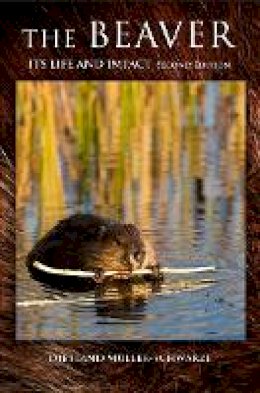
The Beaver: Natural History of a Wetlands Engineer
Dietland Müller-Schwarze
Beavers can and do dramatically change the landscape. The beaver is a keystone species—their skills as foresters and engineers create and maintain ponds and wetlands that increase biodiversity, purify water, and prevent large-scale flooding. Biologists have long studied their daily and seasonal routines, family structures, and dispersal patterns. As human development encroaches into formerly wild areas, property owners and government authorities need new, nonlethal strategies for dealing with so-called nuisance beavers. At the same time, the complex behavior of beavers intrigues visitors at parks and other wildlife viewing sites because it is relatively easy to observe.
In an up-to-date, exhaustively ... Read more
Beaver facts:
•Just as individual beavers shape their immediate surroundings, so did the distribution of beavers across North America influence the paths of English and French explorers and traders. As a result of the fur trade, beavers were wiped out across large areas of the United States. Reintroduction efforts led to the widespread establishment of these resilient animals, and now they are found throughout North America, Europe, and parts of the southern hemisphere.
•Beaver meadows provided early settlers with level, fertile pastures and hayfields.
•Based on the fossil record, the smallest extinct beaver species were the size of a muskrat, and the largest may have reached the size of a black bear (five to six times as large as today's North American beavers). Beaver-gnawed wood has been found alongside the skeleton of a mastodon.
•Some beavers remain in the home lodge for an extra year to assist their parents in raising younger siblings. They feed, groom, and guard the newborn kits.
•In 1600, beaver ponds covered eleven percent of the upper Mississippi and Missouri Rivers' watershed above Thebes, Illinois. Restoring only 3 percent of the original wetlands might suffice to prevent catastrophic floods such as those in the early 1990s.
Show LessProduct Details
About Dietland Müller-Schwarze
Reviews for The Beaver: Natural History of a Wetlands Engineer
